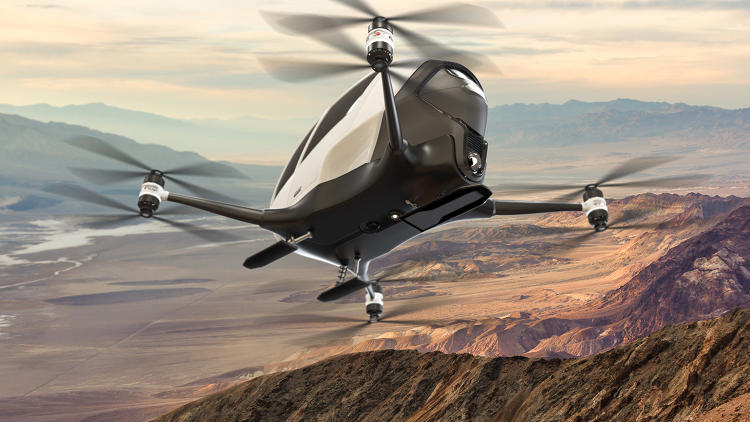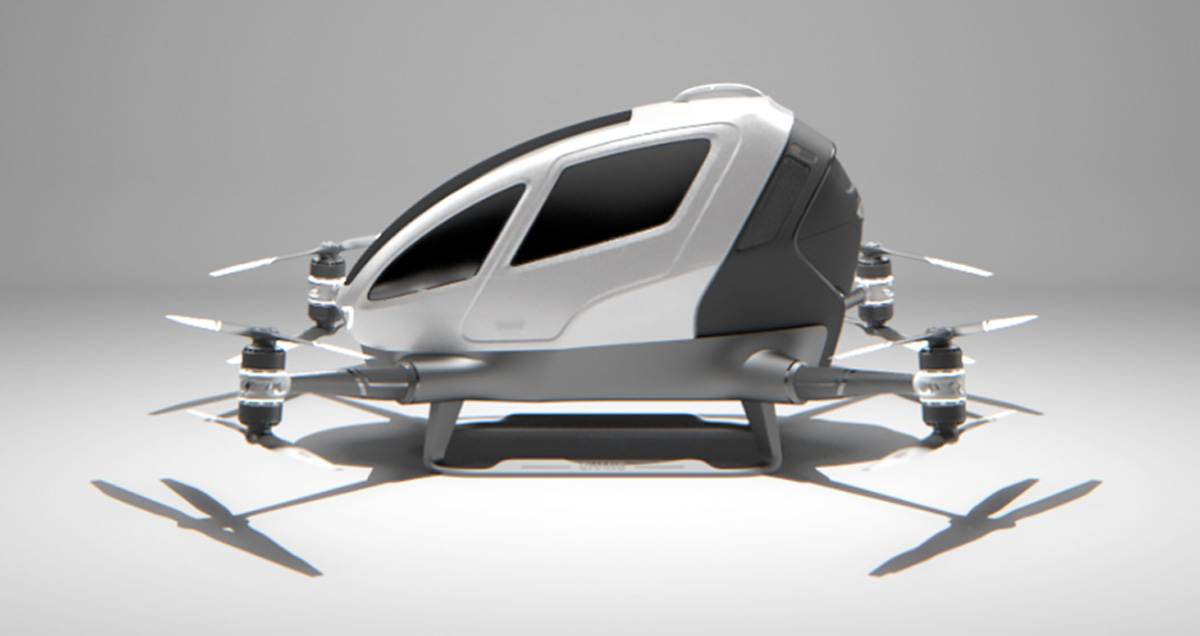Everything You Need to Know About the First Human-Carrying Drone
CES 2016 just opened to the public today, and there’s already plenty to talk about.
Oculus announced preorders for its first consumer VR headset. LG has a new bendable roll-up display. Even IBM’s Watson is doing stuff again. But the coolest thing by far has been this human-sized automated drone, unveiled yesterday by Chinese manufacturer EHang. Here’s what we know so far:
1. The EHang 184 is is a capable of carrying a single passenger around 10 miles at speeds up to 62 mph.
It sits around four and a half feet tall and weighs 440 pounds. There’s also a 220 pound weight limit for passengers. Storage space is limited to a small trunk in the back, big enough for a backpack or small suitcase.
Completely electric, the 184 can fully charge in two hours.

2. The ride is also totally automated – even if something goes wrong.
There’s no controls onboard should anything go wrong. Everything is run through a small tablet in the cockpit. Simply crawl in and input your desintation.
According to Fortune, EHang has “a 24-7 flight control center [that] monitors each flight and can intervene in emergency situations.”
TechCrunch reports that other fail-safes include “multiple backups for each flight system, as well as a feature where the aircraft will immediately land if a passenger’s life is at risk.”

3. According to EHang spokespeople, the company’s conducted 100 successful manned tests of the 184. But we’re still waiting to see someone fly in it.
Footage of the drone has been limited to 3D renderings of the machine.
4. There’s no word on when the drone will be commercially available.
Although EHang CEO Huazhi Hu bills the 184 as a safer, more convenient alternative to a helicopter – really? – the company will face a slew of regulations from aviation authorities around the world. In the US, the FAA has moved to tight regulations in the past year, requiring amateur hobbyists to register their UAVs before they can fly.










